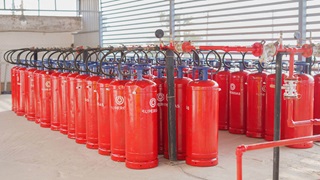LPG Vs Other Fuels: A Detailed Carbon Study

When it comes to powering your operations, you've probably got a few fuel options on the table, right? Well, have you ever wondered how they compare regarding their carbon footprint?
LPG has gained attention over the years as a cleaner alternative to traditional fuels like Furnace Oil, Diesel, Coal, Electricity and natural gas, not just in terms of carbon footprint but also in terms of productivity.
Let's examine LPG and its carbon emission performance against other fuels.
| Fuel |
Carbon Footprint (kg CO2/KL) |
Key Considerations |
| Furnace Oil | 3,290 | 1. Furnace oil typically has a high sulfur content, leading to the formation of SOx emissions during combustion. 2. Using furnace oil requires investment in specific equipment for handling and burning, such as storage tanks, pipelines, pumps, and burners. 3. Furnace oil can cause fouling and corrosion in equipment, leading to increased maintenance expenses. 4. The long-term availability and price of furnace oil are uncertain due to the global shift towards cleaner energy sources. |
| Diesel | 2,720 | 1. HSD also produces nitrogen oxides (NOx) and particulate matter, which cause air pollution and health problems. 2. HSD requires careful storage to prevent contamination and degradation. 3. HSD combustion can lead to engine and equipment wear and tear, increasing maintenance costs. 4. In cold climates, HSD can become viscous or even gel, affecting fuel flow and requiring additional measures like heating or additives. |
| Coal | 7,500 | 1. Burning coal emits various harmful pollutants, including SO2, NOx, particulate matter, mercury, and lead, causing air pollution and health problems. 2. Coal mining, particularly surface mining methods like mountaintop removal, can lead to deforestation, soil erosion, and the destruction of ecosystems. 3. Coal combustion produces large quantities of ash and other solid waste, which contain toxic substances and require careful disposal. 4. While coal may be relatively inexpensive in the short term, the long-term environmental and health damage can lead to substantial economic burdens. |
| Natural Gas | 2,270 | 1. Methane, the primary component of natural gas, is a potent greenhouse gas, and leaks during production and transportation can contribute significantly to climate change. 2. The availability of natural gas can vary by region and may be affected by geopolitical factors. 3. A robust infrastructure, including pipelines and storage facilities, is essential for a reliable supply. |
| LPG | 2,646 | 1. LPG burns relatively cleanly, producing lower emissions of particulate matter, contributing to improved air quality and reduced environmental impact. 2. LPG has a high energy density, meaning it can provide a significant amount of heat for a given volume. 3. LPG is relatively easy to transport and store, especially in cylinders, which can be advantageous for industries located in areas with limited access to pipeline infrastructure. 4. LPG combustion is relatively easy to control, allowing for precise temperature control in industrial processes. |
LPG is often a solid choice when you balance carbon footprint with versatility and convenience. If you are planning to go cleaner (which you should!), check out our carbon calculator to see how much you can save and make an informed decision for your industry and the planet.
SUPERGAS, a leading LPG supplier in India, is not just an LPG provider but an energy partner who provides end-to-end solutions to keep your industry safe and running all the time.
Want to know more? Contact us @9121177930